Wedding Band Tips: Insider Advice for the Perfect Choice
Choosing the perfect wedding band is an exciting part of planning your big day. This piece of jewelry will symbolize your love and commitment, so you want it to be just right. With so many options available, it’s important to know what to look for to make a confident choice.
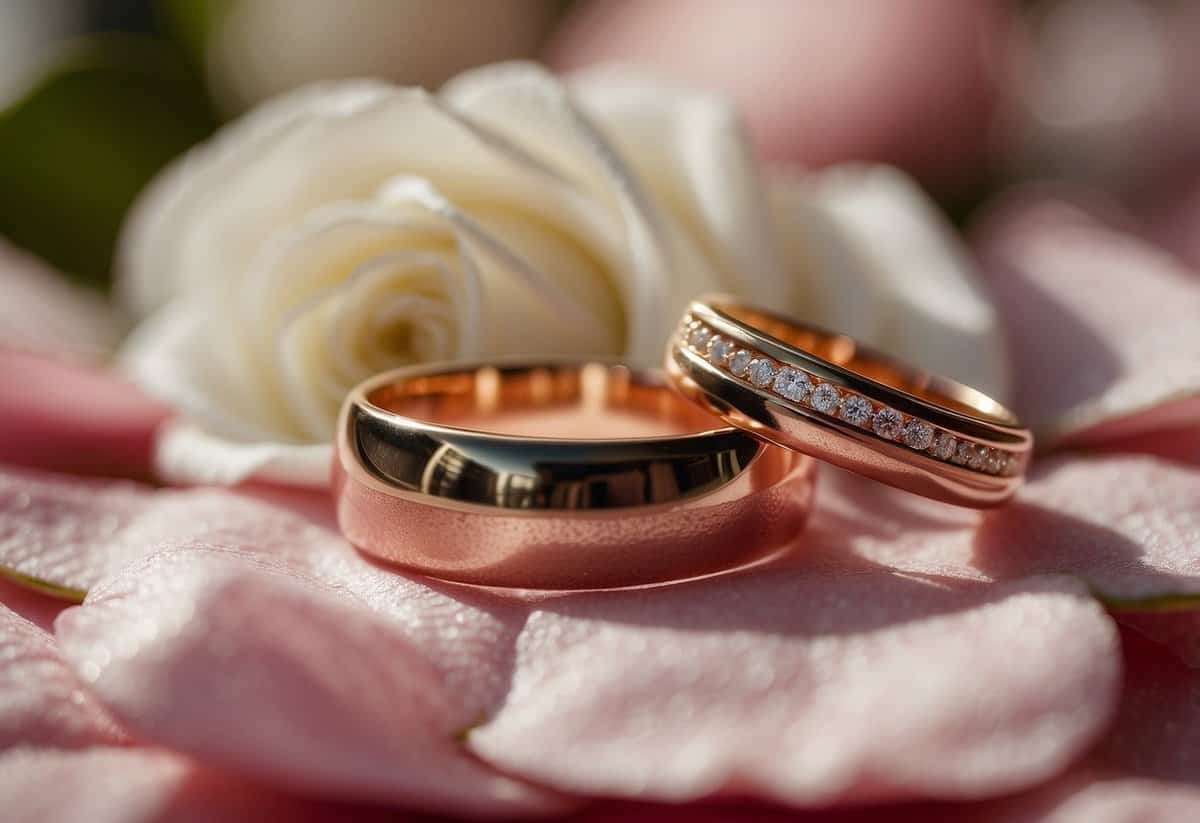
When shopping for wedding bands, you’ll need to consider factors like budget, style, and metal type. By taking the time to understand these key aspects, you can find a wedding band that matches your lifestyle and personal taste. Whether you prefer something simple or more elaborate, having a clear idea of what you want will make the process smoother and more enjoyable.
1) Decide on a Budget

Setting a budget is the first step in choosing a wedding band. It’s important to talk with your partner about how much you are both comfortable spending.
Knowing your budget helps narrow down your choices. Wedding bands come in a wide range of prices, from affordable options to luxury bands.
Discussing this early on avoids surprises later. Also, consider other wedding expenses so your ring budget fits into the whole plan.
Starting with a clear budget helps you stay on track and find a wedding band you will love without breaking the bank.
2) Coordinate with the Engagement Ring
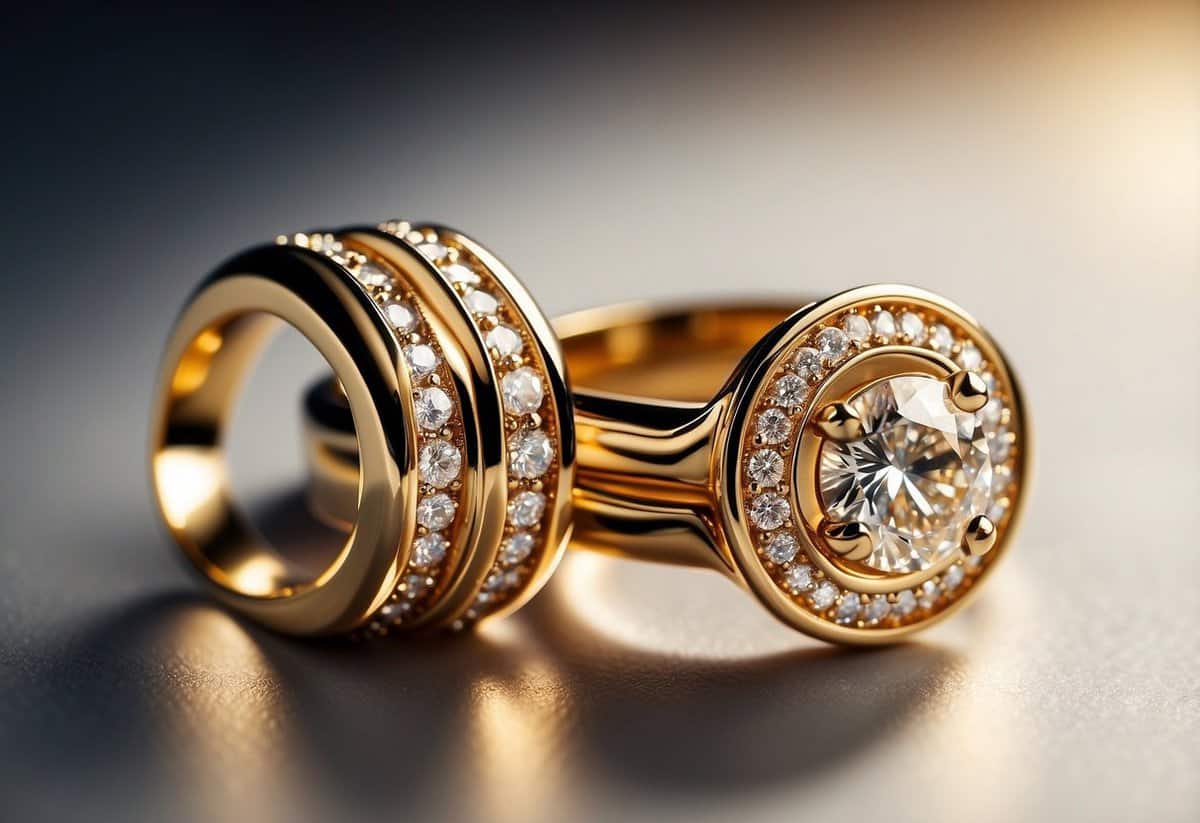
Your wedding band and engagement ring are a duo. They should look good together. Think of this as making two pieces of a puzzle match.
If your engagement ring has a unique shape, like a curve or a notch, find a band that complements it. For example, a curved wedding band pairs nicely with a solitaire engagement ring. This adds sparkle and makes the set look bigger.
Make sure the metals match. If your engagement ring is platinum, then a platinum wedding band keeps a consistent look. Mixing metals can look great too, but be sure it matches your style.
Consider the gemstones. If your engagement ring has a certain shape, like an oval-cut diamond, you might want your wedding band to have similar stones. This creates a harmonious look, making the rings seem like they were made for each other.
Visit your jeweler together to try different options. This helps you see how the rings look and feel together.
3) Choose a Metal
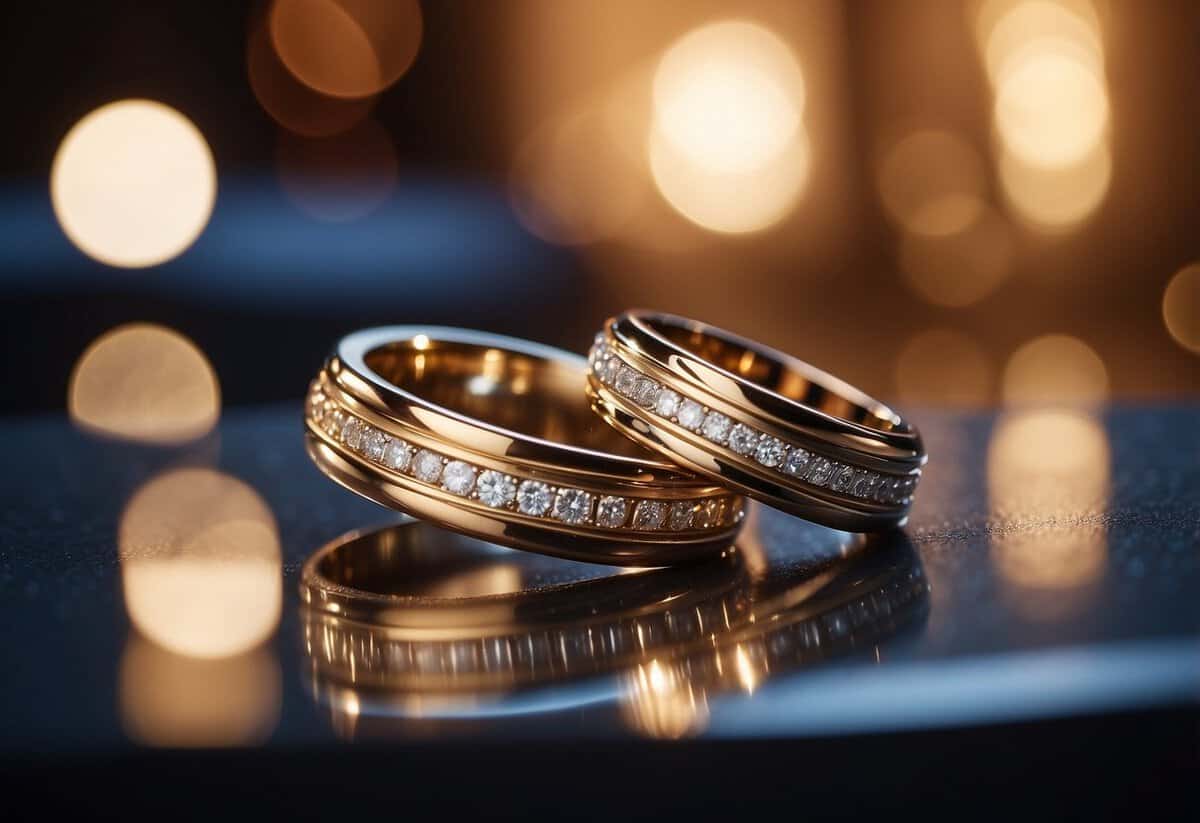
Choosing the right metal for your wedding band is important. Think about what matches your style and daily life. Some metals are more durable, while others have a classic look.
Gold is a popular choice. It comes in different shades like yellow, white, and rose. White gold has a modern look, while yellow gold feels more traditional.
Platinum is another great option. It’s strong and resists tarnish. Titanium is lightweight and very durable, perfect for active lifestyles. Palladium is a good choice too, similar to platinum but often cheaper.
If you want something unique, consider tungsten or cobalt. These metals are tough and have a sleek, modern appearance. Each metal has its pros and cons, so take your time to find the one that suits you best.
4) Think About Lifestyle
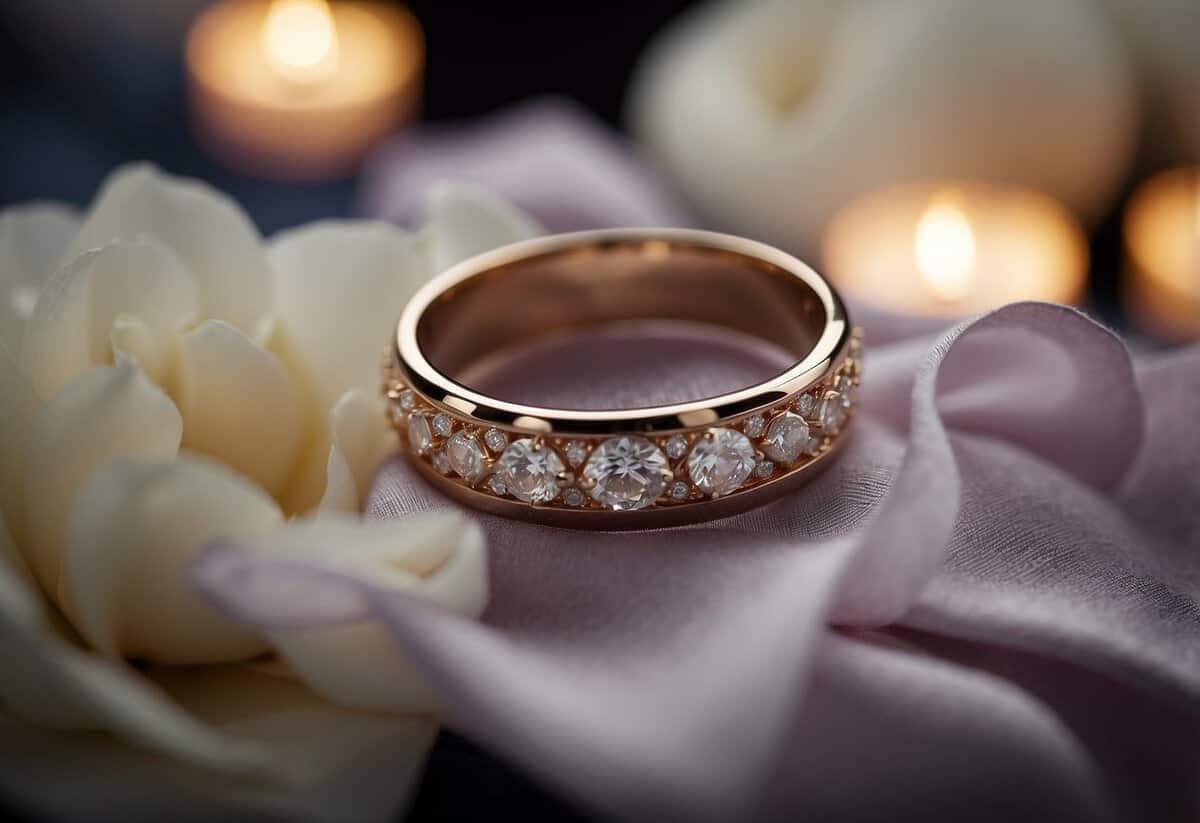
When choosing wedding bands, it’s important to consider your lifestyle.
If you have an active lifestyle, you may want a ring that’s durable and can withstand rough activities. Look for materials like tungsten or platinum.
For those who use their hands a lot at work, a simpler design without stones can prevent damage and be more practical.
If you enjoy fashion and changing styles, you might prefer a ring that’s easily paired with various outfits. Match your band to your personal style.
Think about comfort too. A ring that’s too bulky or heavy can be annoying if you wear it every day. Try different styles and shapes to see what feels best.
Your wedding band should fit seamlessly into your daily life, symbolizing love without causing any hassle.
5) Measure Your Ring Size
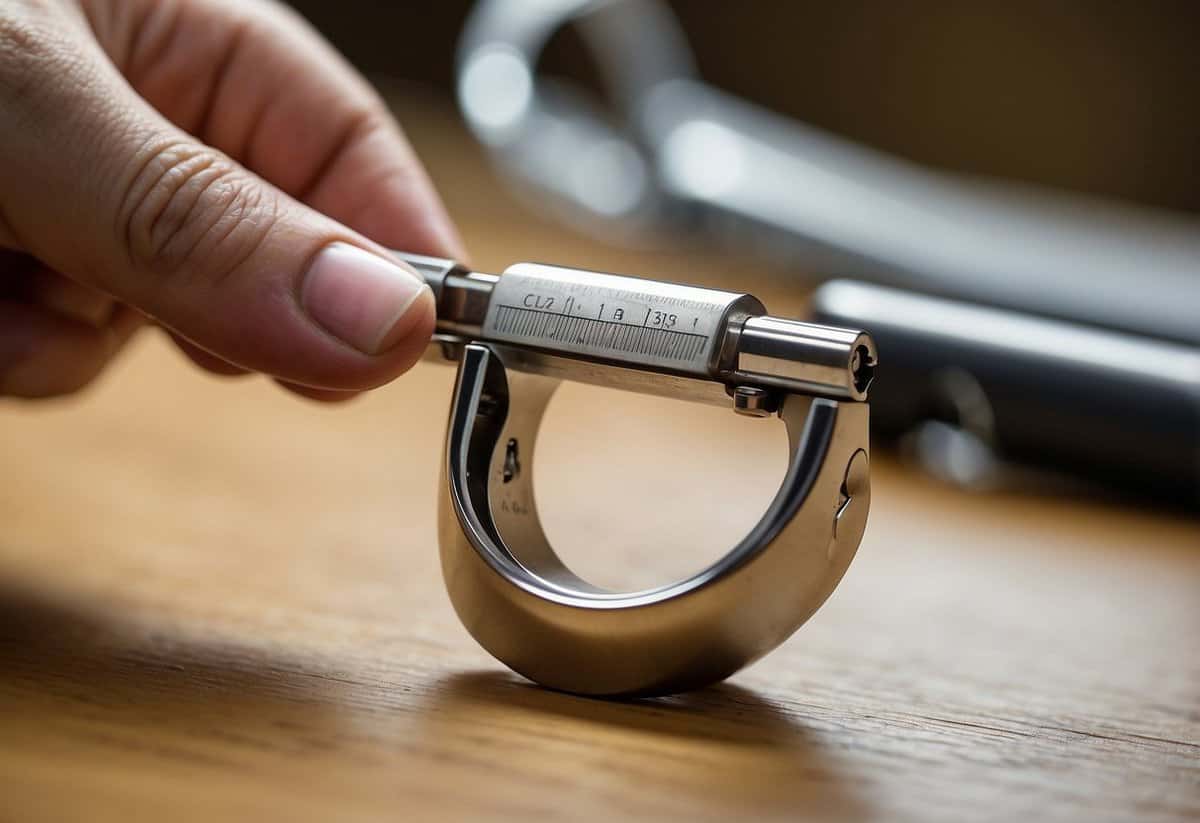
Finding the right ring size for your wedding band is very important. Start by wrapping a piece of string or paper around the base of your finger. Mark where it overlaps with a pen.
Next, lay the string or paper flat and use a ruler to measure the length in millimeters. Divide this measurement by 3.14 (Pi) to get the diameter of your ring.
You can also print a ring size chart from a jeweler’s website. Make sure it’s printed to scale by choosing “Scale 100” in the print options. Place a current ring over the circles on the chart to find the best match.
Always measure the finger where you’ll wear the ring, as sizes can vary between fingers on the same hand. Remember, if your measurement falls between two sizes, go for the larger size for comfort.
6) Consider Matching Bands
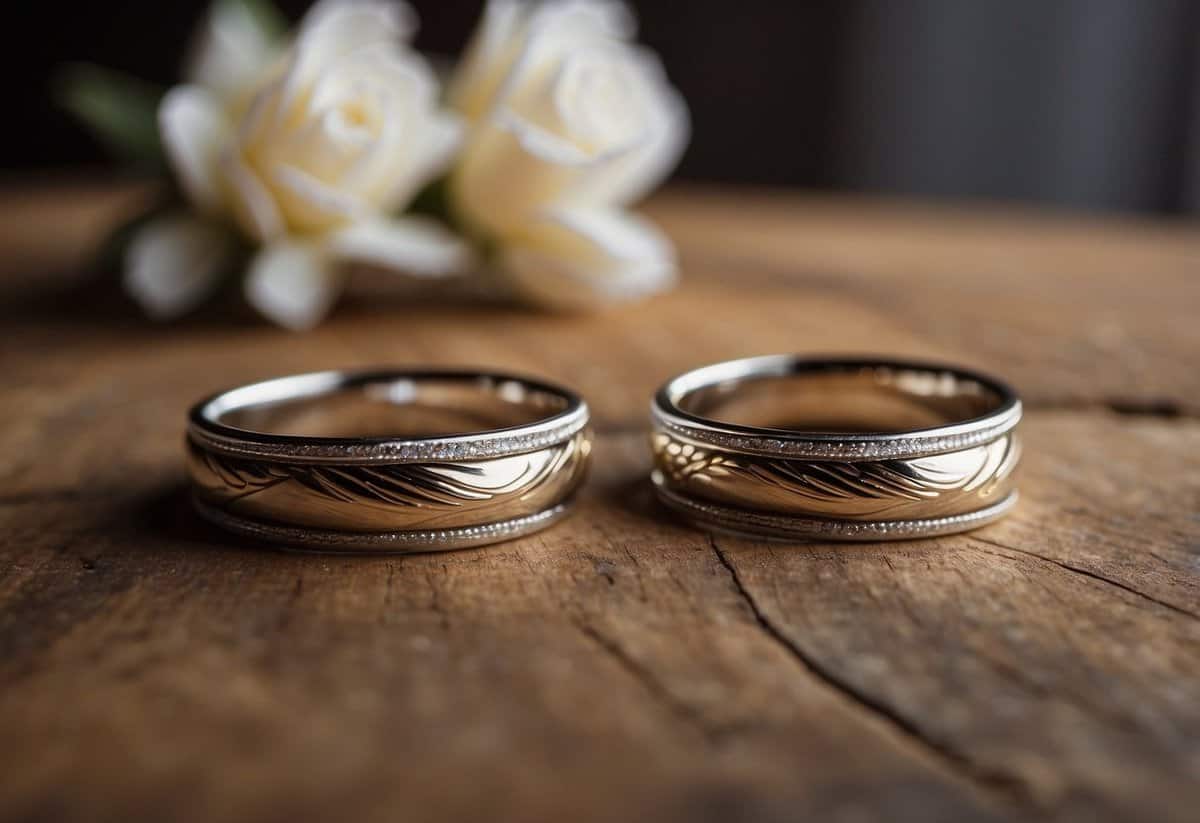
Matching wedding bands are a popular choice for couples who want to symbolize their unity. These bands offer a cohesive and harmonious look. When your rings match, they create a visual bond that reflects your relationship.
Matching bands can be a tangible way to celebrate your commitment. It’s a sweet and timeless gesture that shows you are linked.
However, matching bands might not suit everyone’s style. Ensure they fit both your tastes and personalities. It’s important to choose rings that feel right for both of you.
If either of you has a metal allergy, you may need to select specific materials. This could limit some design options, but there are still plenty of beautiful choices available.
Matching wedding bands can strengthen your bond. Take your time to find the perfect set that you’ll cherish forever.
7) Explore Custom Designs
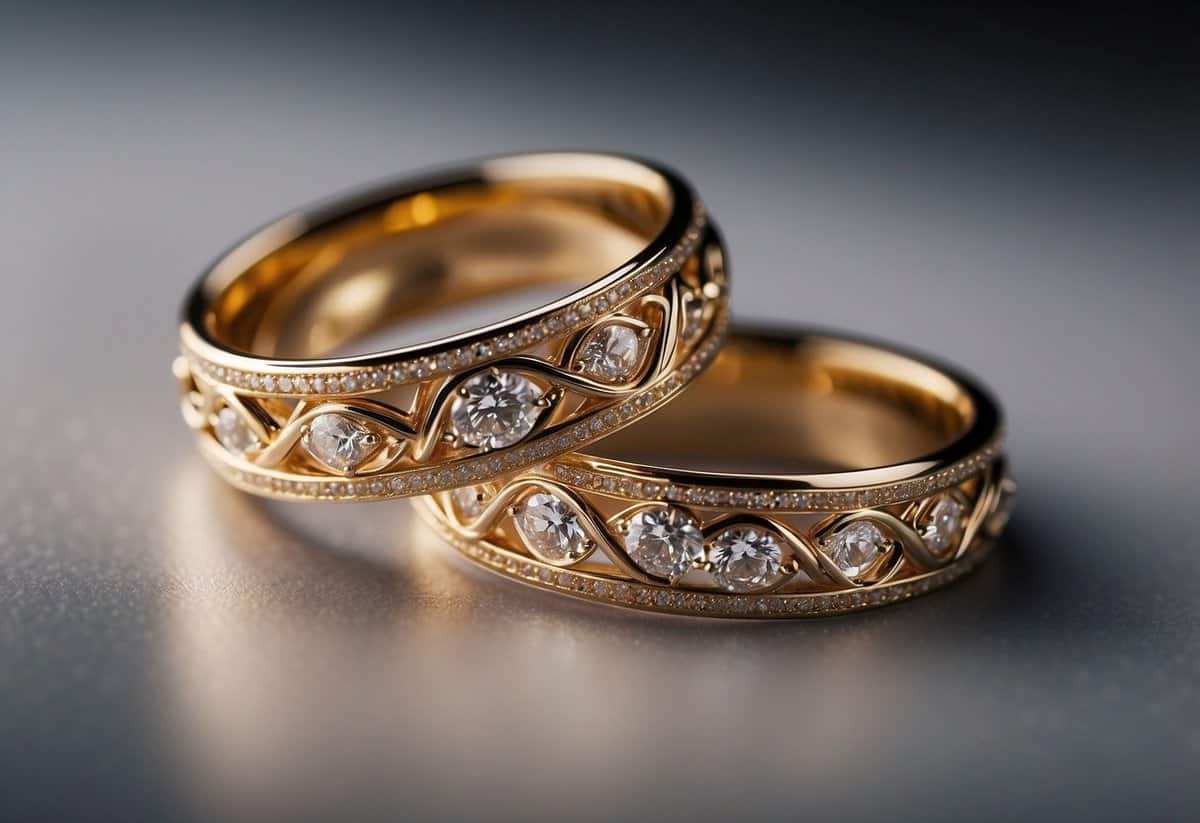
Creating a custom wedding band lets you show your unique style. Start by sharing your ideas and vision with your jeweler. Use a Custom Design Form to outline your budget, ring size, and preferred style. This helps the jeweler understand what you want.
Think about the materials and design elements. Popular choices include different types of metals, gemstones, and engravings. You can mix and match to create something special.
Be sure to plan ahead. Custom designs can take 4-6 weeks to complete. Working with your jeweler early ensures your ring is ready in time for your big day.
Don’t hesitate to ask questions. Many jewelers offer consultations via email, phone, or even Zoom. This way, you can be involved in every step of the process.
8) Don’t Forget Practicality
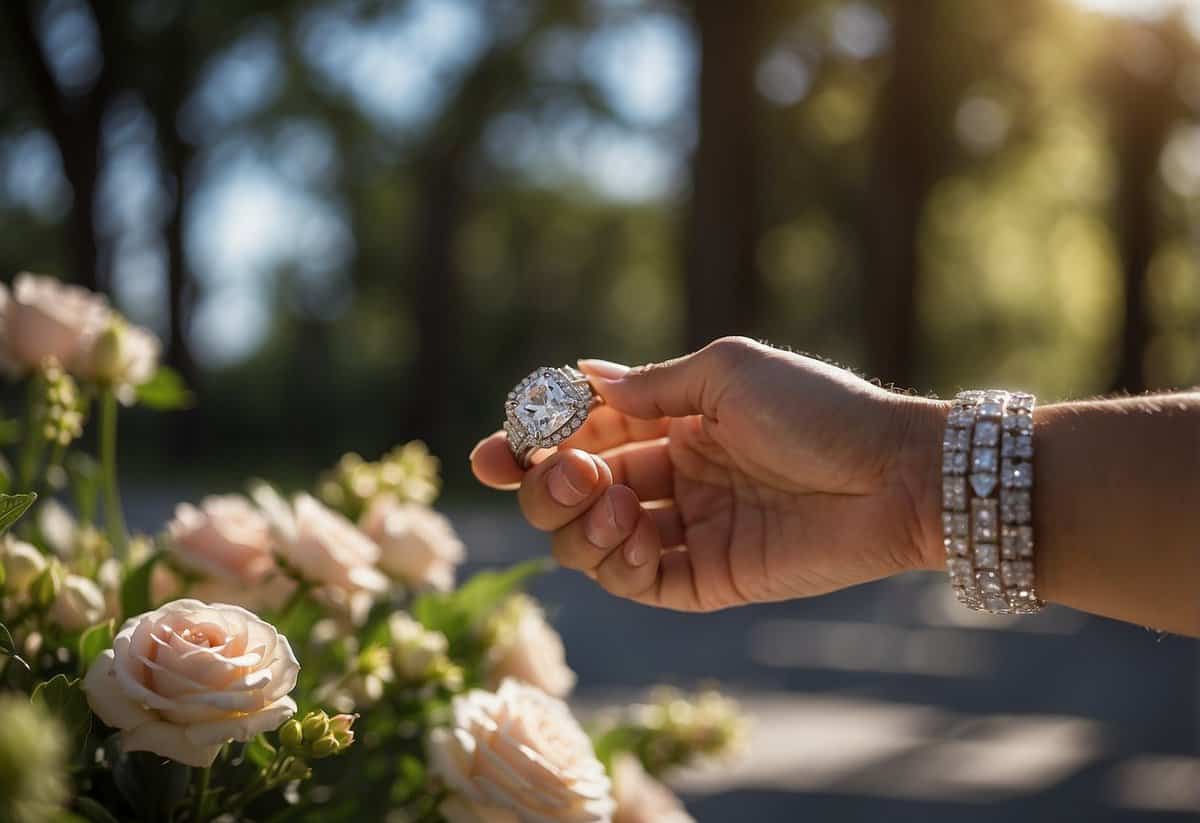
When choosing your wedding band, think about your daily life. You want your ring to be comfortable and match your lifestyle. If you work with your hands a lot, a simple and sturdy design might be best.
Consider how your ring will hold up over time. Some metals are more durable than others. Gold is classic, but platinum and titanium can be more scratch-resistant.
Make sure the band matches your engagement ring. You don’t want one to overpower the other. Check that the styles and metals complement each other.
Lastly, remember to get the correct ring size. Resizing can be tricky depending on the design. Get professionally measured to avoid any mishaps.
9) Look into Special Features
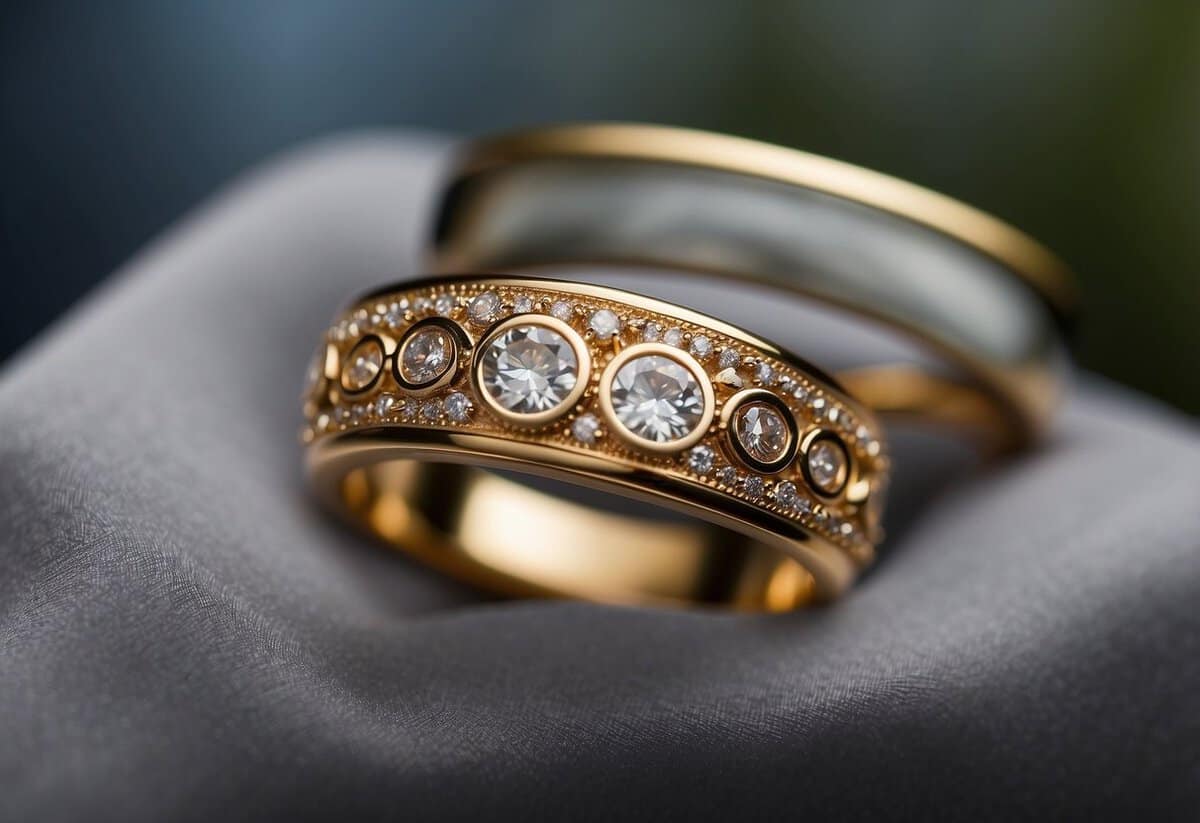
Special features can make your wedding band unique. Consider engraved messages, like a favorite quote or your wedding date, to add sentimental value. Personal touches make the band more meaningful.
Another special feature is choosing a band with gemstones. Diamonds, sapphires, or other stones can enhance the beauty of a plain metal band. They add sparkle and individuality.
Thinking about durability, try looking into bands with extra coatings. Some have scratch-resistant or hypoallergenic finishes. These keep your band looking new and comfortable to wear every day.
10) Plan Early
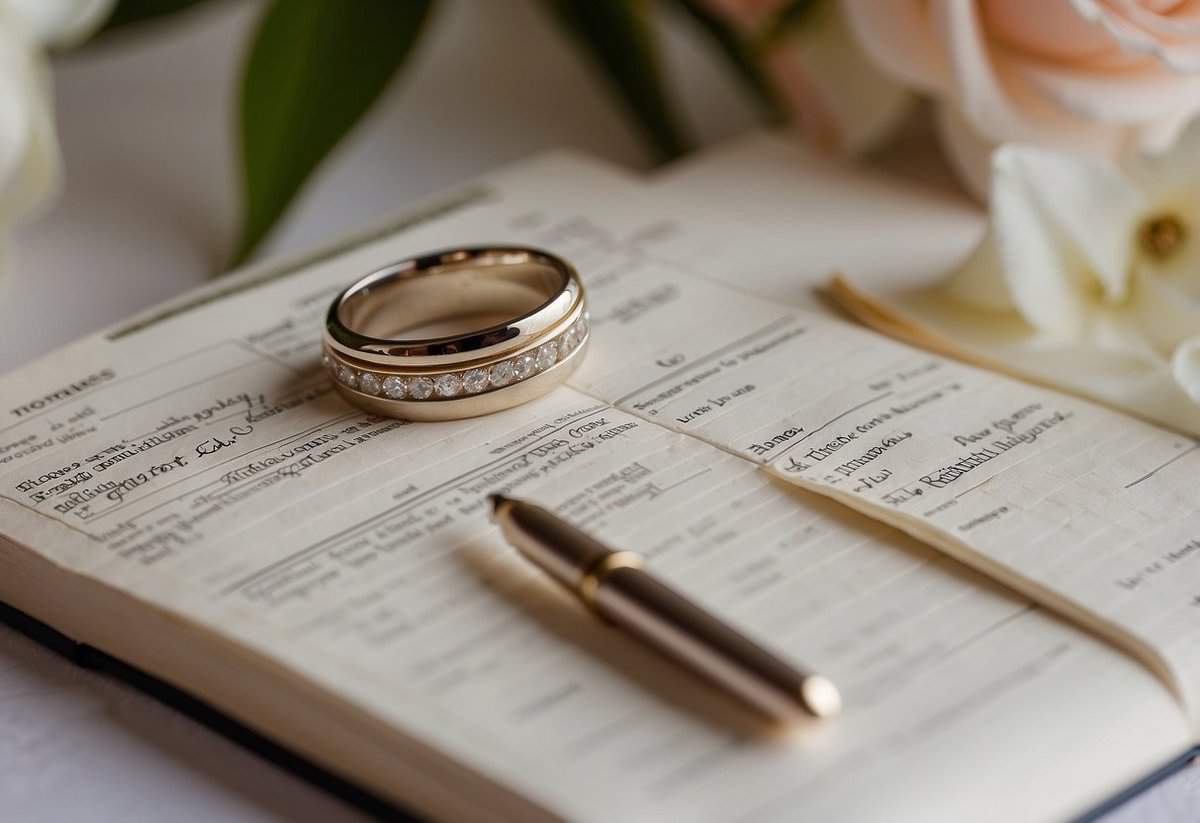
Start your wedding band search early. This gives you plenty of time to explore different styles and prices. It also means you won’t feel rushed into making a quick decision.
Begin looking for your bands at least three to four months before the wedding. This allows time for any custom designs or resizing that may be needed.
If you plan ahead, you can shop around and compare prices. Stores can have different deals, so it’s smart to look at multiple options. This way, you can find the perfect rings that fit your budget and style.
Factors to Consider When Choosing a Wedding Band
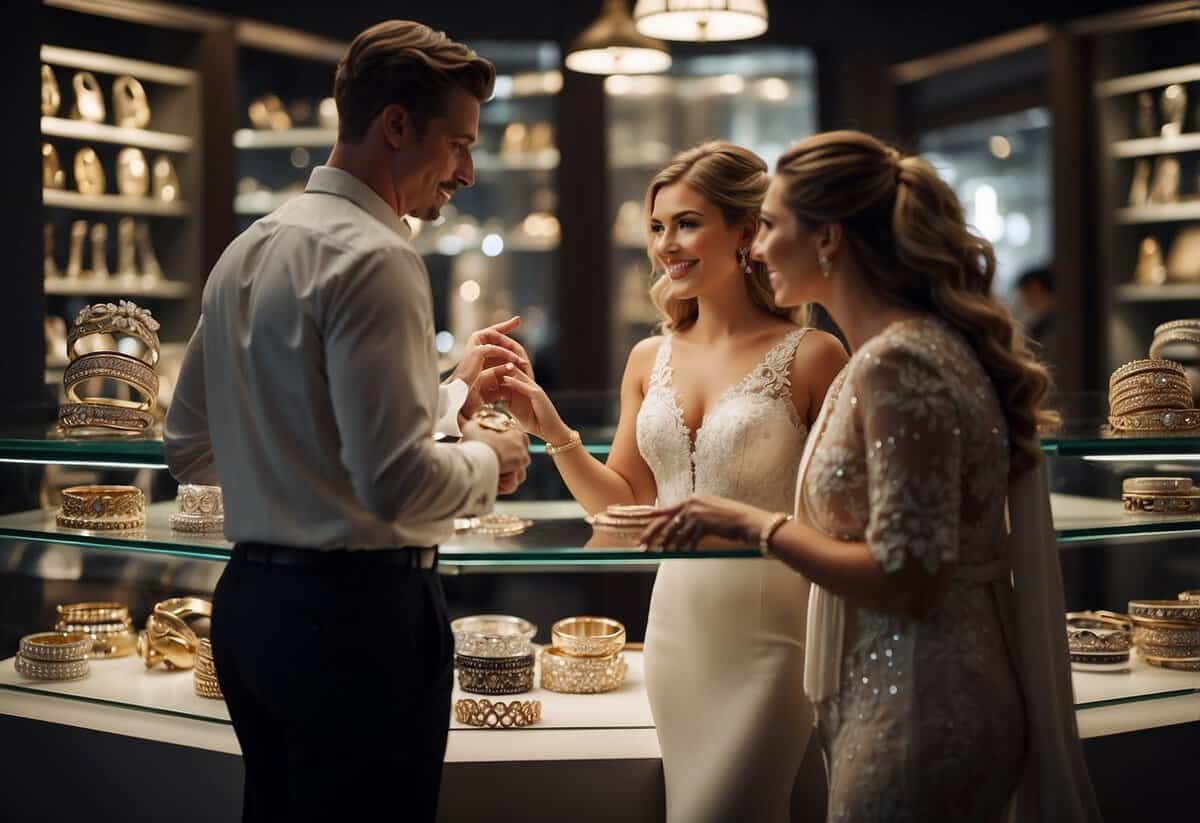
Choosing a wedding band involves looking at various aspects like the metal type, band width, and how it matches with the engagement ring. Paying attention to these details ensures that your wedding band is special and suits your style.
Metal Type and Quality
The metal type and quality of your wedding band are critical choices. Gold, platinum, silver, and titanium are popular options. Each metal has unique features.
Gold can be yellow, white, or rose. Platinum is strong and doesn’t tarnish. Silver is affordable but can scratch easily. Titanium is lightweight and durable.
When selecting the metal, think about allergies or skin reactions.
Some people may be sensitive to nickel, often found in white gold. Platinum is hypoallergenic, making it a good choice for sensitive skin. Durability is another factor. Platinum and titanium are very strong and can stand up to daily wear.
Band Width and Thickness
The width and thickness of a wedding band affect comfort and appearance. Wider bands make a strong statement and are heavier. Thinner bands are subtle and lightweight.
Try on different widths to see what feels best. Consider your hand size and finger length too. If you have slender fingers, a narrower band might look better. People with larger hands might prefer a wider band.
Thickness also influences durability. Thicker bands are more resistant to bending and wear. However, a thick band can feel bulky if you’re not used to wearing rings. It’s essential to balance comfort with style.
Matching with Engagement Ring
If you have an engagement ring, choose a wedding band that complements it. The metals should match in color and finish. For instance, if your engagement ring is white gold, pick a white gold band.
Think about the design too. A simple band looks great with a detailed engagement ring. If your engagement ring is plain, a more intricate band might add interest. Some opt for bands that fit snugly against the engagement ring, called contoured bands.
Others prefer a slight gap between the two rings. It’s personal preference but makes a big difference in how the rings look together. For a perfect match, consider purchasing them from the same jeweler or designer.
Personalizing Your Wedding Band
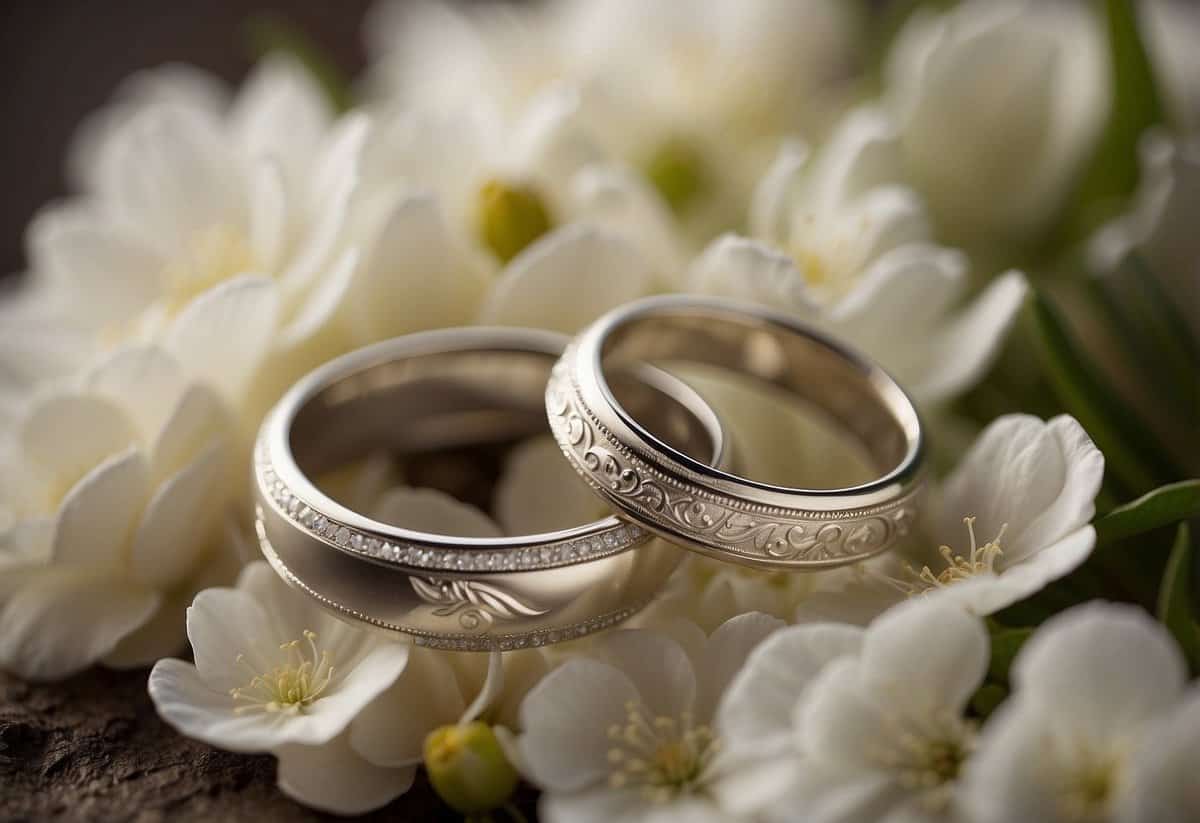
Personalizing your wedding band makes it uniquely yours. Engraving and custom designs are two popular ways to add a special touch to your ring.
Engravings
Engraving your wedding band adds a personal message or significant date. Smooth bands with a width of at least 3mm are ideal for clear, legible engraving. Popular materials like gold, silver, and platinum are easy to engrave.
Some ideas for engravings include:
- Special dates (anniversary, wedding date)
- Short phrases (e.g., “Forever”, “I love you”)
- Symbols (heart, infinity symbol)
Fonts and styles can vary, so discuss options with your jeweler to find something that fits your style.
Custom Designs
Creating a custom design allows you to add unique elements to your wedding band. This could involve unique patterns, mixed metals, or gemstones. You may choose symbolic designs that represent shared memories or cultural symbols meaningful to both of you.
Laser engraving is also an option for intricate patterns or adding a hidden design inside the band. When planning a custom design, communicate your ideas clearly with the jeweler and ensure they understand your vision.
Care and Maintenance
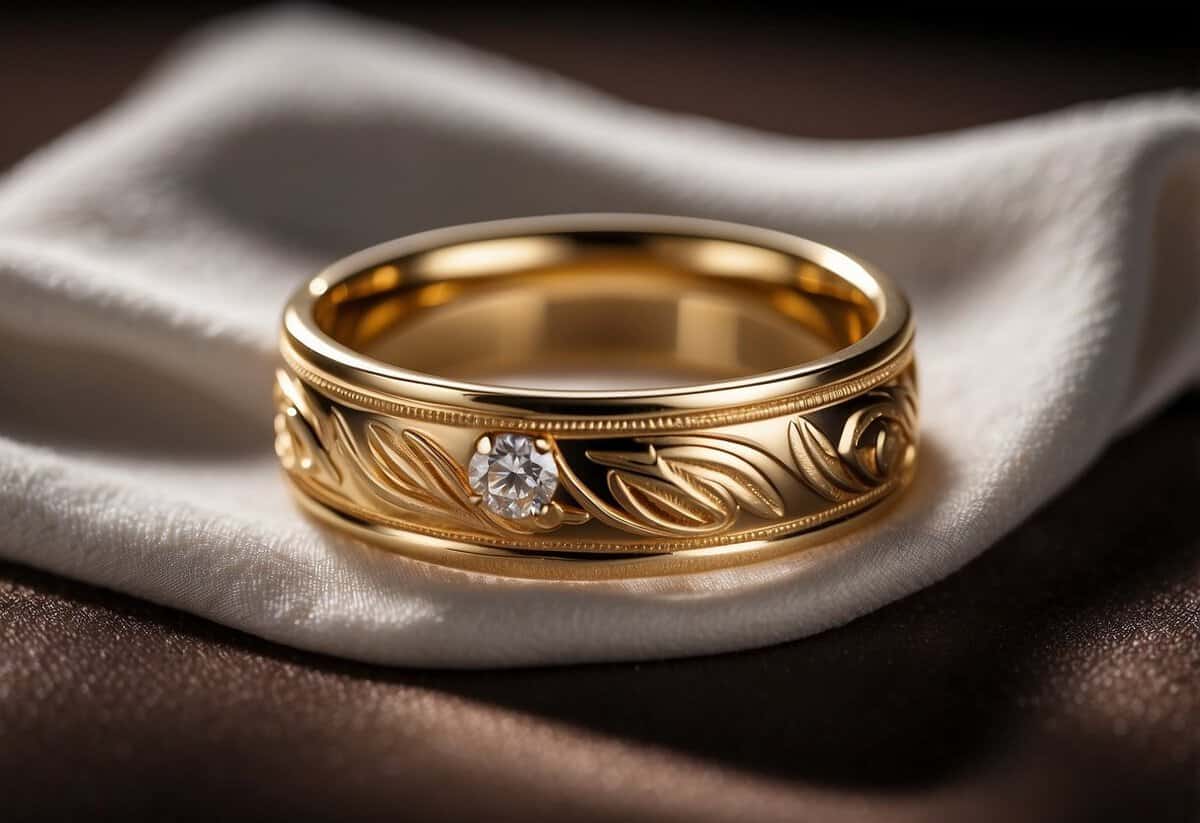
To keep your wedding band looking as beautiful as the day you first wore it, regular cleaning and proper storage are key. Let’s explore some essential tips for maintaining the sparkle and integrity of your rings.
Cleaning Tips
Regular cleaning helps maintain your ring’s shine and cleanliness. Start by soaking your ring in warm water mixed with a few drops of mild, non-abrasive dish soap. Let it sit for about 20 minutes to loosen any dirt or oils.
Use a soft toothbrush to gently scrub the ring, paying close attention to any nooks and crannies. Avoid using abrasive materials that could scratch the metal or stones. After scrubbing, rinse the ring under lukewarm water to remove any soap residue.
Dry your ring with a clean, soft cloth or paper towel. For deeper cleans, consider having your ring professionally cleaned once or twice a year. This is especially useful for rings with intricate designs or delicate stones. Polish platinum or yellow gold bands every two years to maintain their luster.
Storing Your Bands
Proper storage is crucial to protect your wedding bands from damage. Always remove your ring when doing activities that could scratch or damage it, such as gardening, cleaning, or exercising. Store your ring in a dedicated jewelry box with a soft, lined interior to prevent scratches and other damage.
For extra protection, place your ring in a small, fabric-lined compartment or a soft pouch. This prevents it from coming into contact with other jewelry pieces, which could cause scratches. Avoid placing your ring in direct sunlight or areas with extreme temperatures, as this can weaken the metal and affect the stones.
Regularly check the setting and prongs to ensure they are securely holding any stones in place. If you notice any loose stones or other issues, take your ring to a jeweler for a professional inspection and necessary repairs. This proactive care helps your wedding band remain a cherished symbol of your love, standing the test of time.








